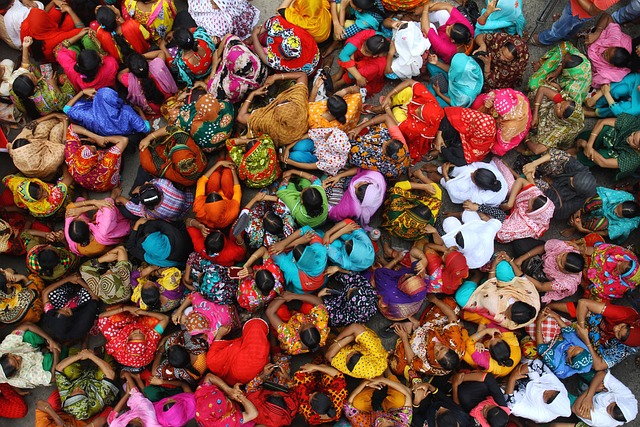Author: Deepak Joshi Pokhrel
While the nation was observing 16 days of activism against gender-based violence in Nepal – a global campaign from November 25 to December 10 last year – a teenager in Kalikot district was sexually assaulted by a local man. Following the horrific violence, the girl reported to the local police station seeking justice. But sadly, some locals exerted pressure on the family to settle the case outside the law, maintaining their social status. This is just one case reflecting how social norms and cultural resistance widen the gender inequality. There are several others.
With the theme “Our commitment: solidarity for ending gender-based violence”, the 16 Days event was celebrated with high zeal and enthusiasm. The event aimed at addressing systemic violence and inequality. However, the structural barriers and cultural resistance continue to marginalise women, perpetuating gender inequality in the country.
Last year, 736 million experienced violence across the globe – a reflection of pervasive gender inequality. Nepal mirrors this trend. The report by the National Demographic Survey 2016 stated that one in three women aged 15-49 had faced gender-based violence. Over 21,568 cases of gender-based violence were reported between July 2023 and July 2024.
Looking for a reason why such violence continues and thrives in our society? Start with existing social structural barriers and cultural resistance. Socially, Nepal has been a patriarchal society for a long time. The social structure is based on the assumption that men are the decision-makers while women are just for men’s consumption. The individual, social fabric, and psyche deeply embed this perception.
Furthermore, the preference of a son over a girl is yet another challenge widening the gender inequality gap. In Nepal, the people mainly in rural areas believe that they will go to heaven if the son lights their funeral pyre. According to a study by UNICEF in 2023, it was found that for married women with at least two children, three-quarters of them expressed no preference for the sex of their child during the first pregnancy. Such thinking is held even by the economically well-off families of semi-urban and urban areas in the country. They harbour the view that female children are a burden socially, culturally and economically. As a result, many girl children are aborted in the country.
Nepal has made significant strides in education over the years. The literacy rate is 71% according to the 2021 national census, which was 48.6% in 2001. However, the gender inequality gap is still pervasive. The drop-out rate is higher among girls than boys, especially in the upper grades, and women have lower literacy rates than men. This disparity stems from various factors, including social and cultural norms, socioeconomic status and limited access to resources.
The harmful practice of Chhaupadi is still highly prevalent in far western districts of the country despite it being criminalised by the apex court. The Chhaupadi is an outdated and orthodox practice that banishes adolescent girls and women after childbirth to a cowshed during the first five days of their monthly cycle. While in Chhaupadi, they are exposed to sexual exploitation and wild animal attacks. There are even reports of girls’ and women’s deaths while in Chhaupadi due to unbearable cold during winter.
The gender inequality is vividly seen when we critically examine access to basic services, including health. For instance, women in Nepal experience a longer delay (3.3 months) in diagnosing any ailment compared to men (2.3 months). A study conducted in 2016 found that over 40% of women could not make decisions over their own health care. This is mainly due to deep-rooted social and cultural norms and beliefs that restrict women’s mobility, limit household decision-making processes, treatment costs, distance to health care facilities, and lack of permission to seek treatment.
Politically, the gender representation is still a far cry in the country. Though the nation has transformed politically following the April movement, 2006, the political parties are still driven by the old mindset, refusing to offer space for women’s leadership. A total of 14,445 women won various posts in 2022 local elections and are in the local government. This looks impressive. However, considering that many of these posts are reserved for women by law, this figure appears elusive. Moreover, only 25 and 568 women won mayoral and deputy mayoral positions in 753 local units, respectively. Similarly, 69 women won the post of ward president while 442 women were elected as ward members (other than the reserved women’s quota). But the major positions of the party – be they major or fringe, such as chairpersons – are still male-dominated.
One wonders why the gender inequality continues to thrive in Nepal. The answer to this question is not very big. It is very simple. The legal remedies are in place, but there is sluggish implementation. The stereotype of men thinking they are superior while women are their subordinates is the other major problem that fosters the gender inequality gap. At the same time, there is an indifference on the part of the political parties to walk their talk in terms of gender disparity.
Gender inequality is not just a social problem in which people are not treated equally based on their gender. But it is more than that. It is a threat that eclipses the political achievements made through peaceful and bloodless movements. Likewise, it is a bane that infests society. How these threats will evolve over time and what the repercussions might be for a country like Nepal is not clear. What remains clear, however, is that understanding this threat and knowing what to do about it are among the most important questions facing democratic societies like ours today.






